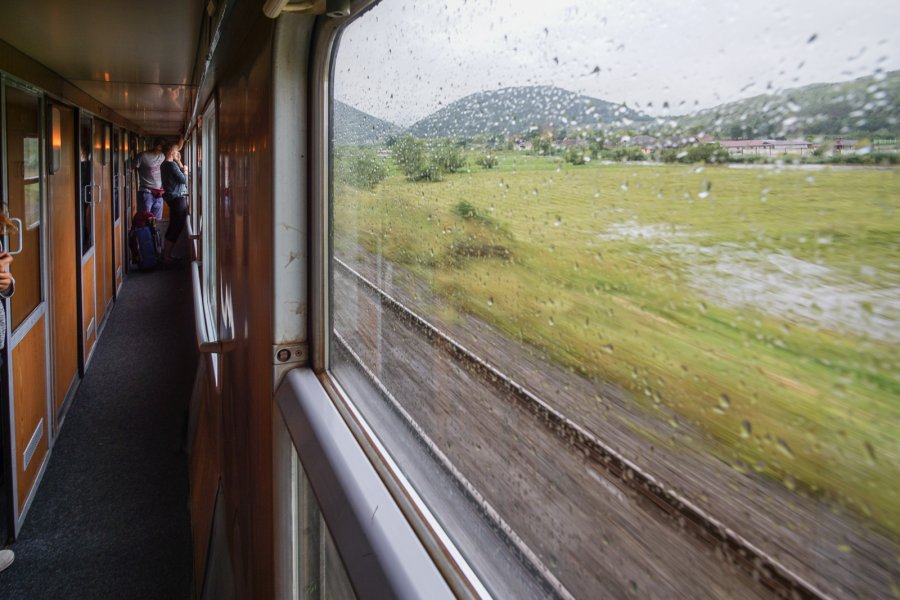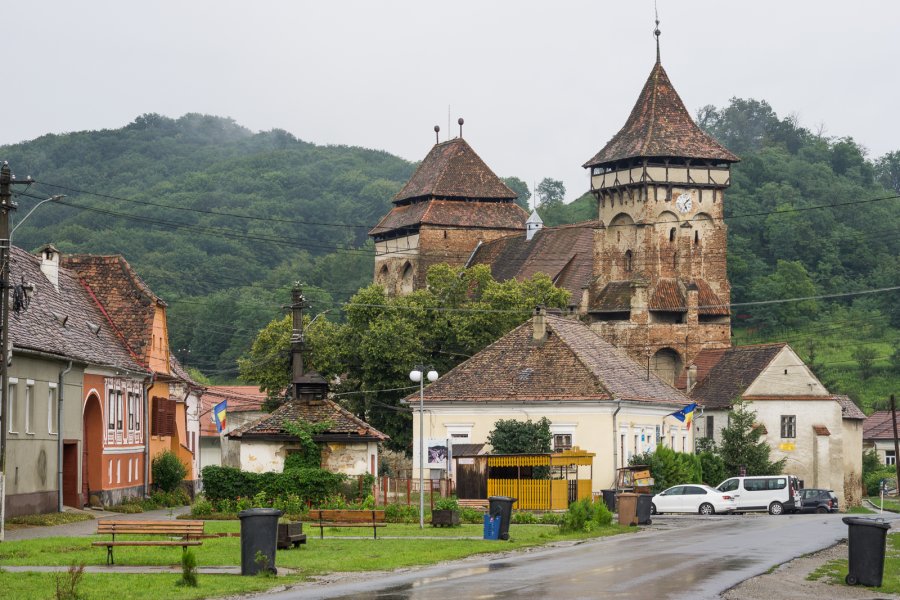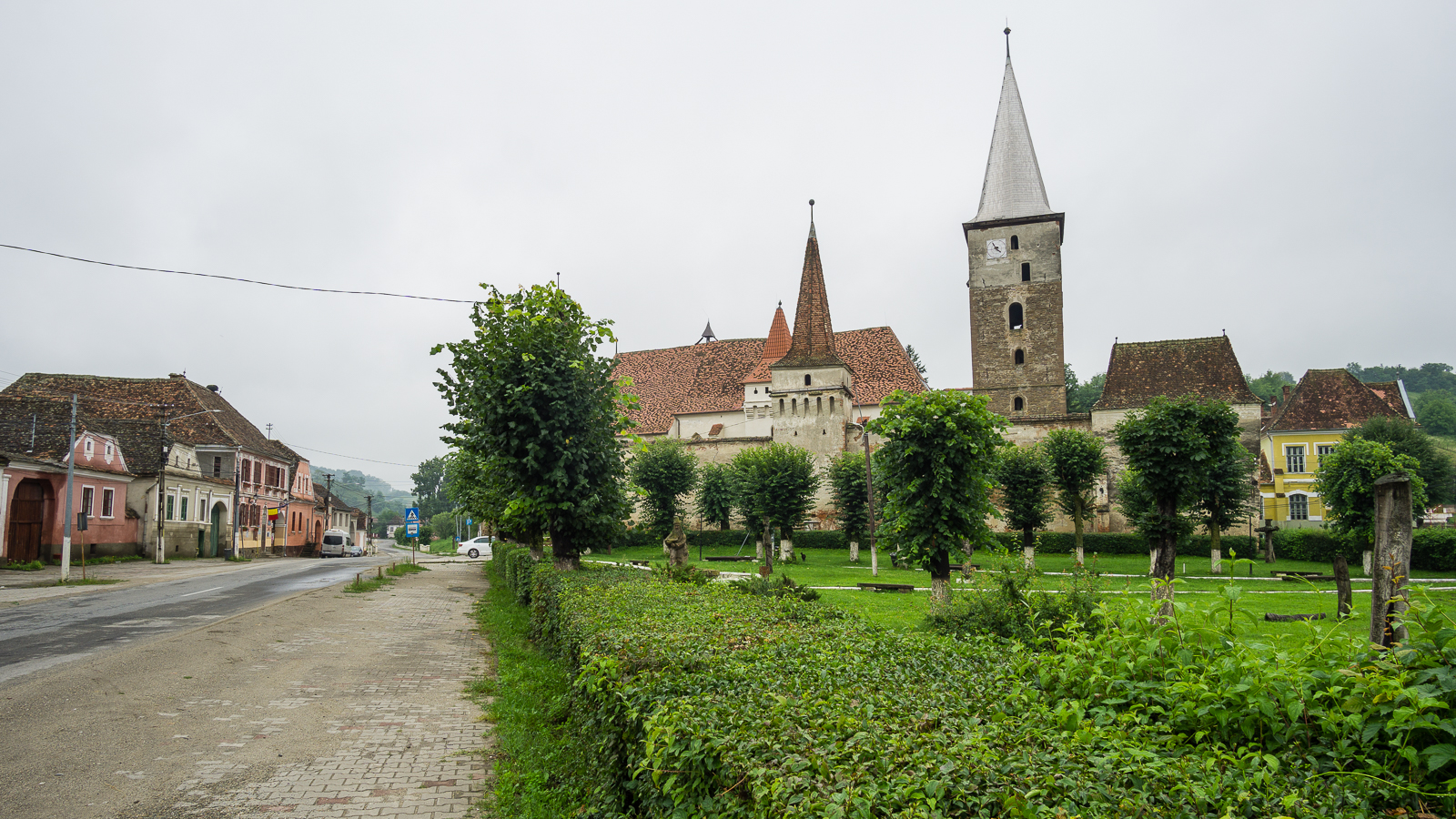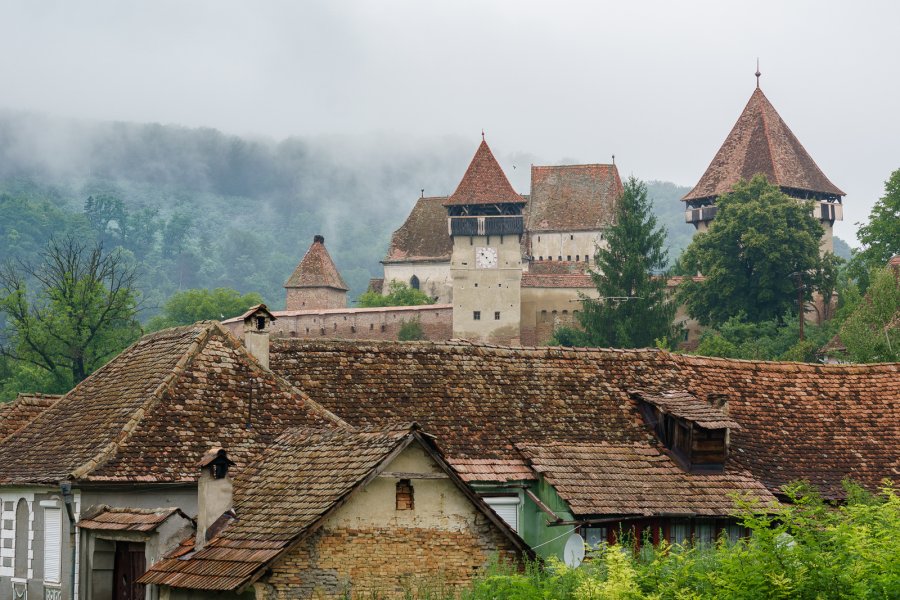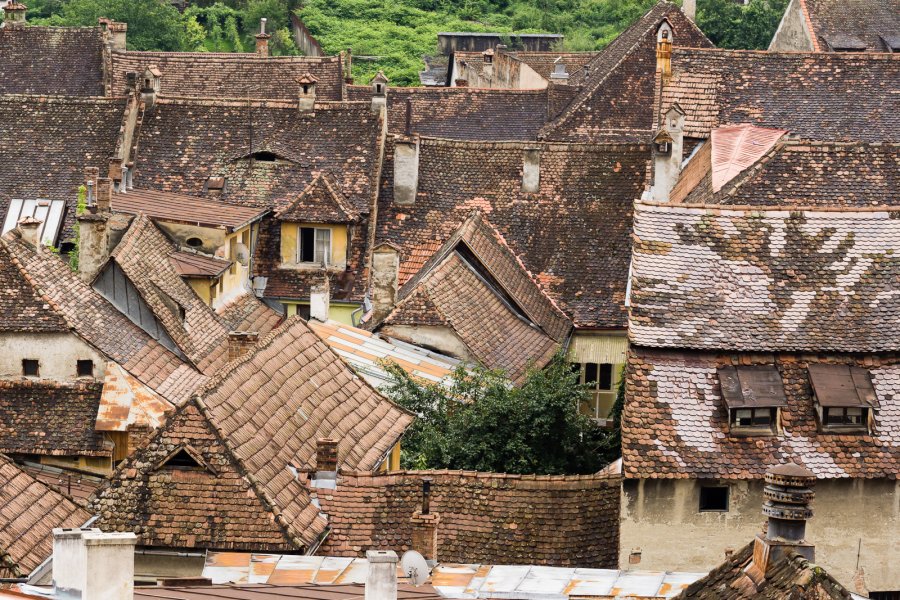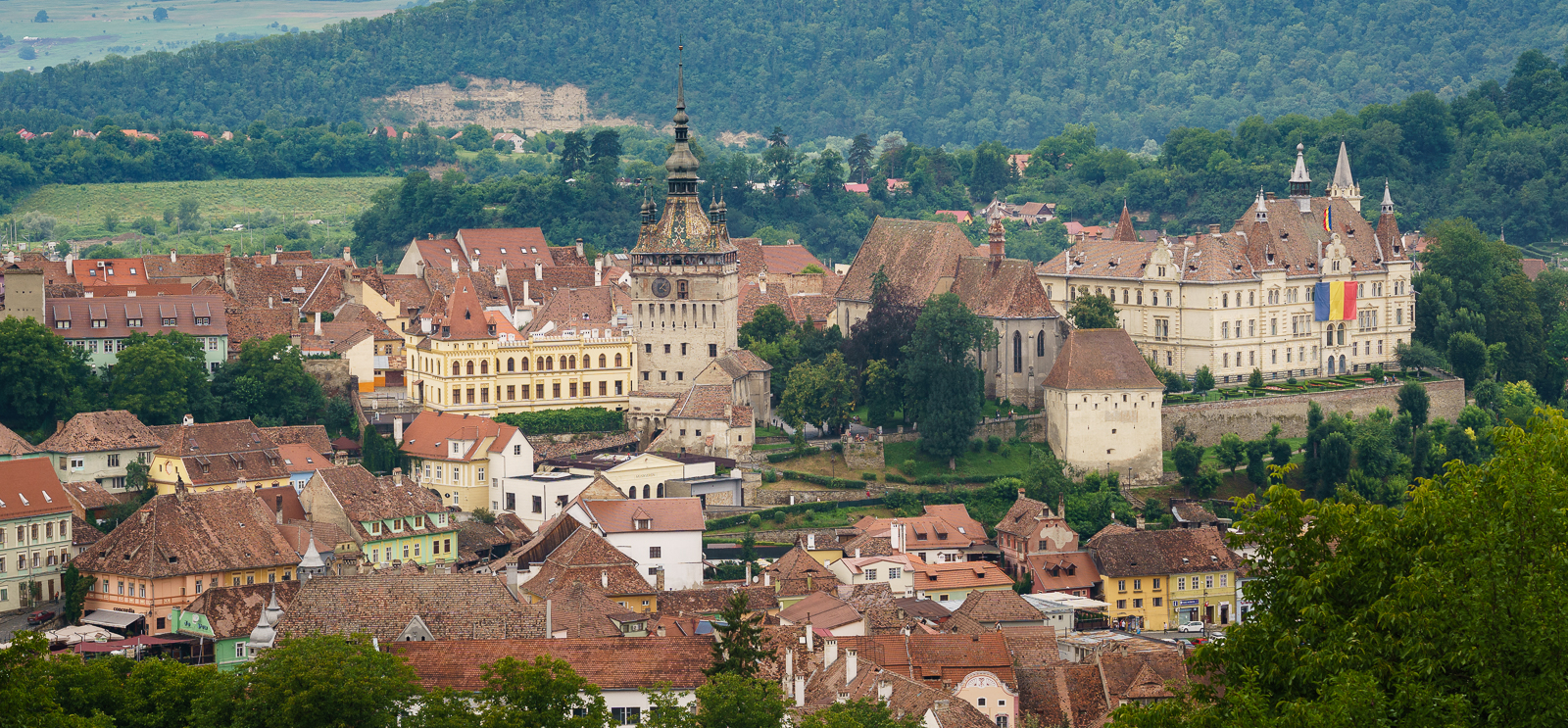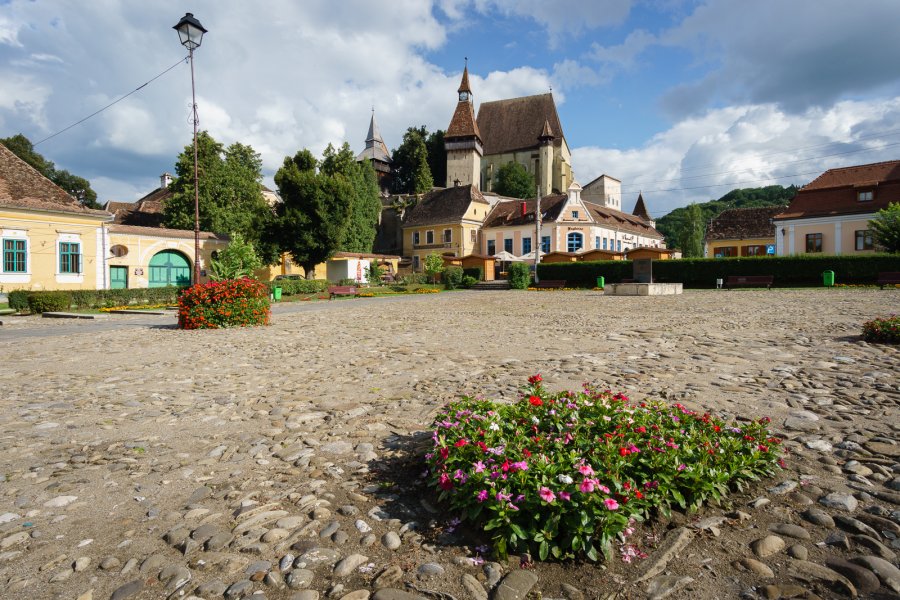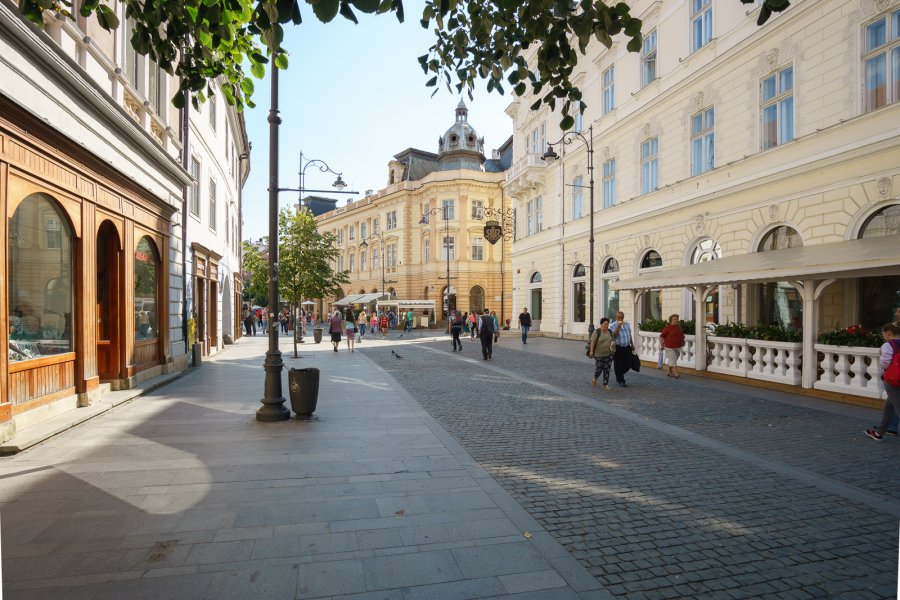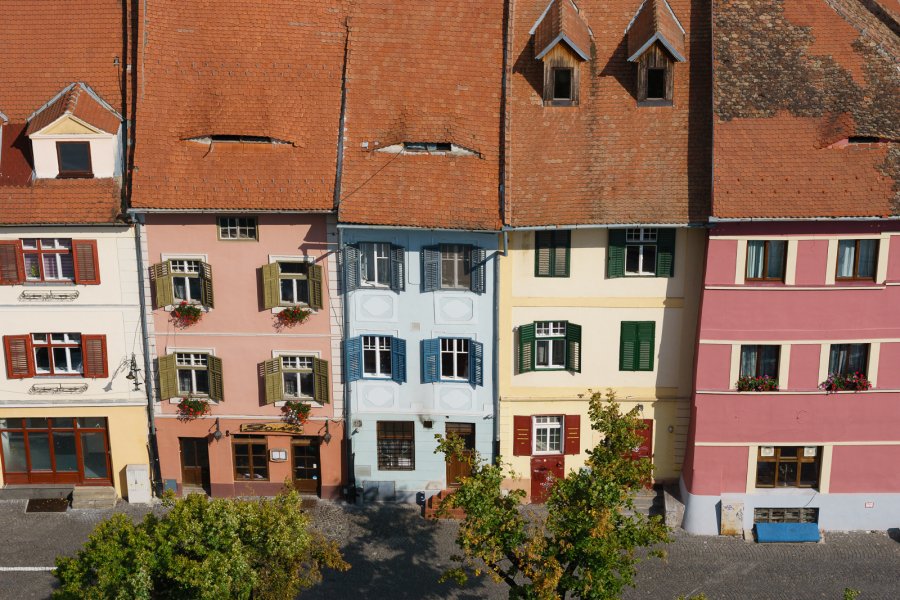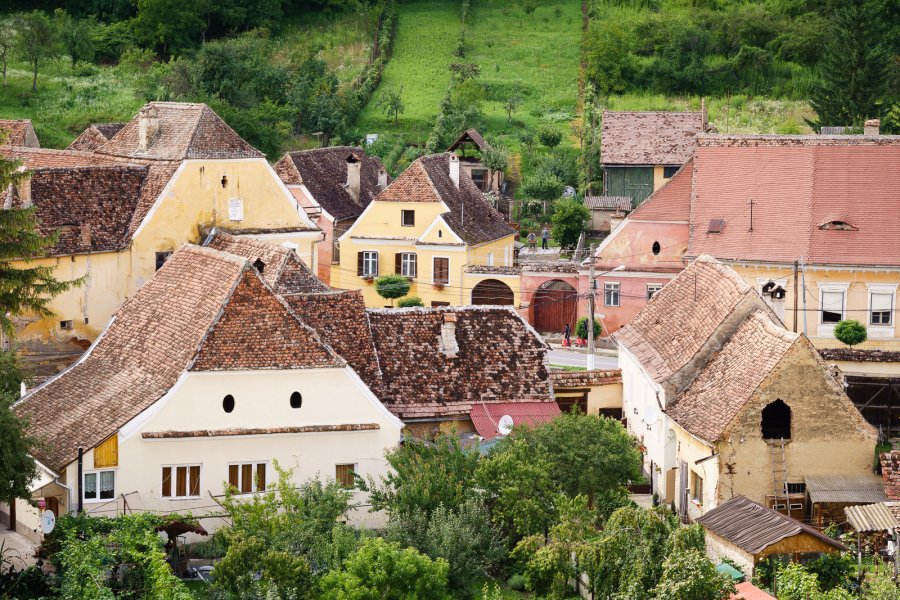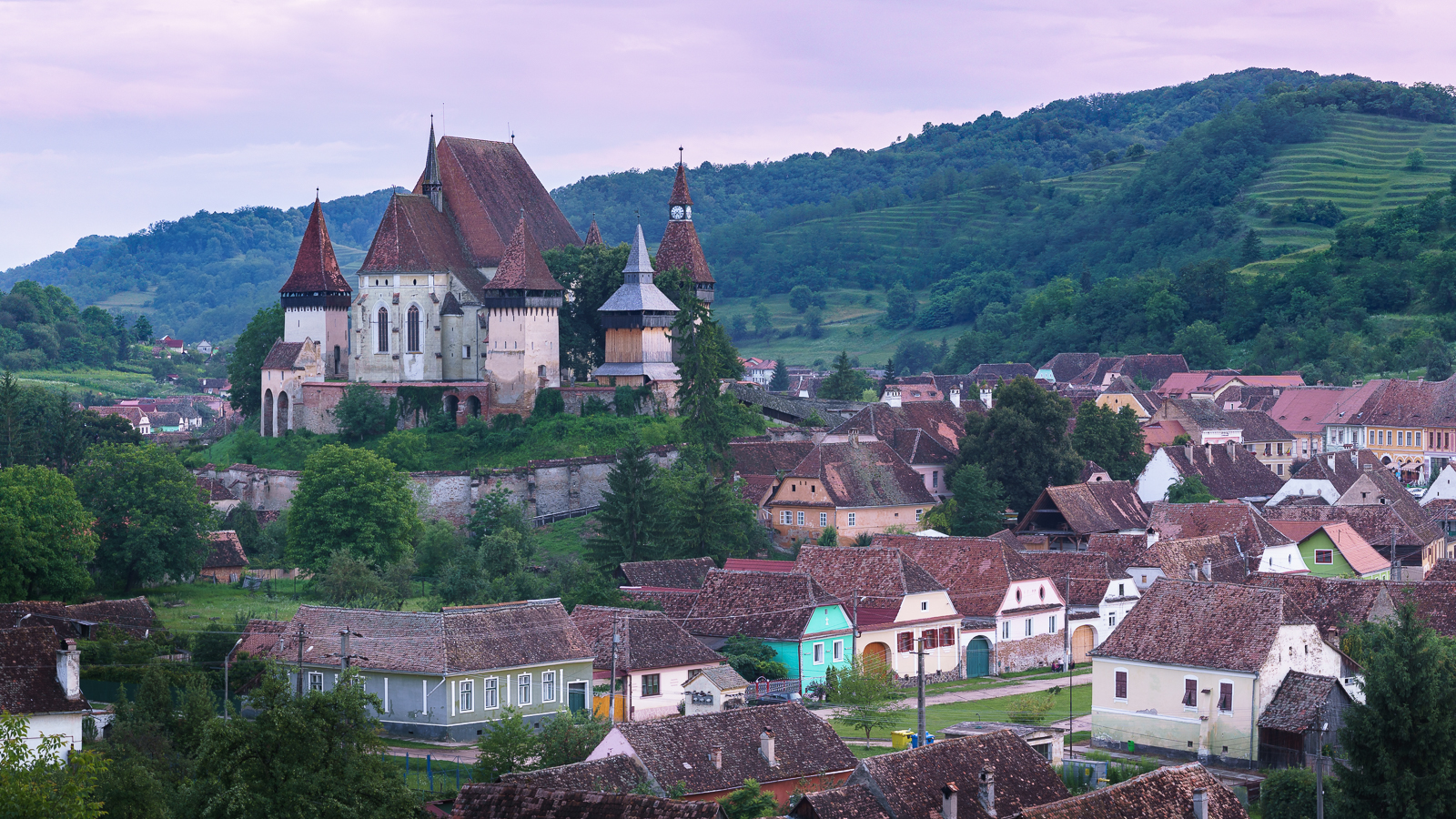Night train from Budapest just passed Miercurea Sibiului and curved railroad forces it to move tremendously slow. It is hard to believe that landscape could change so drastically overnight - few hours in the train feel like decades backwards in time. Morning sun paints large fields under green hills with warm colours as farmers with pitchforks and rakes walk to work. Just like that - no machinery. It takes some time before I notice first tractor - very old, small and rusty machine going between haystacks. The train moves so slowly that it is almost possible to wave at the farmers and I am sure they would smile and greet back if I did. Between the fields, church tower emerges as the first evidence of nearby settlement. Then old roofs of small houses start to appear and finally colourful facades complete the image of Transylvania...
I have that sunny memory of my first romanian encounter in mind when I look of the window in the same train few years later. However, heavy rains and gray clouds change the perceived image as the first building of Hermannstadt - my final station - start to appear. It is sure the weather is against me this time and that I have to spend few days out of mountains. It does not worry me though, as I wanted to go to rural Transylvania as well and soak up the atmosphere of medieval villages there. Once at the station, I rent a car and leave Hermannstadt (or if you want call it as romanians do - Sibiu), capital of historical Saxon Transylvania. I have been there the last time as well, so I know it is a medieval jewel. But because I know there will be a few spare hours before boarding my return train from Transylvania week after, I find other places more important to visit first.
I drive north of Hermannstadt towards Mediasch but before reaching it I turn to a side valley with village of Wurmloch. While many would consider it a shithole place I know why to go there. Wurmloch (which literally translates to "worm hole" from german - and yes, it can be considered equivalent of time travel in reality) is known for its centuries old church.
It may seem boring to go somewhere to see just an old church but this one resembles fortress more than a mere church. Old builing is encircled with defense walls, has a defense tower with loopholes for shooting arrows and even contains small well as a water source in case of prolonged siege. Why that all? Medieval times were extremelly rough here in Transylvania as the region served as a frontier guarding rest of Europe against Ottomans. German settlers built seven walled cities and to provide some protection even for villagers, the largest and sturdiest buildings in every village (in this case churches) were transformed into fortresses.
The church in Wurmloch is protected by UNESCO nowadays with six other sharing the same protection scattered around the region. But here comes the most interesting part: apart from those seven protected churches, there is fortified church in almost every transylvanian village. There are more than 150 still standing so that makes quite a good reason to go there.
When I arrive to Wurmloch, it is almost impossible to drive. I have never witnessed such a strong rain that could make road almost invisible. I stop in the village center just below the famous church and trapped in the car wait for weather to get better. It does not. Water flows from nearby slopes and after mere hour, half of the village is flooded. When the rain finally almost stops, people are everywhere observing damages done. The church is of course closed so I decide to camp close to the village.
In the morning it at least does not rain but the church is still closed and man having the key nowhere to find so I leave Wurmloch for Mediasch. After a short stop I decide to go into even more remote places in the heart of Transylvania. Road changes quickly from quite a nice one into holes over holes as I approach Meschen.
I am welcomed by even larger church with many small defense towers and thick walls. However the church is closed as well and it seems that many parts are not far from collapsing. That makes these buildings even more authentic but on the other hand the situation is quite worrying. Two different churches partially collapsed in last years, as Saxons who lived in Transylvania and took care of these buildings, mostly left the country after the fall of communist regime.
Personally the church in Meschen and village itself did not make quite the impression as other villages (and also the weather was dull) so I left quickly.
Not far from there sign marks turnoff to Alma Vii. The road seems more like dirt road so I worry a little bit if I should go there with rented car but then I remember this is Romania and some of normal roads look like this. It is also still really early in the morning so I do not meet any other cars. Instead, I pass four horse carriages. Farmers wave at me with smiles on their faces and after the last turn I finally see the fortified church on hill over the village. Immediatelly Alma Vii presents itself as a wonderful place. I leave the car outside the village and go there on foot. We greet with an old man in german. He and his wife went scything the grass and I see that luckilly not everything changed here from the old times. Church itself is again closed but I can walk around it. Stork sitting on the defense wall watches me carefully while I roam there, smiling, lost in rural medieval times...
Then I head to Schäßburg (or Sighișoara), historical city with citadel hill, one of the last still inhabited citadels in Europe and place where famous Vlad Dracula was born. The city is small but really beautiful and recently renovated. On many places one would easily mistake it for Germany. The most interesting seem the defence towers, positioned all around the citadel and german graveyard. There, it is hard to believe you are not in Germany with all those german names. Again, distorted history that affected Transylvania in the last century strikes here.
To come to other ideas, I decide to walk the hill opposing the citadel as I expect to see the whole historical city from there. Small hike is more difficult than I firstly thought as I had to find the way between houses before I reached large meadow. After the rains the path was muddy but I was not mistaken with the views. The whole city can be overlooked from there so if you are into photography, this may be the right place to go to get unordinary shots.
I pass many other villages with fortified churches before I reach the real jewel, place that I saw in the photographs some time ago and immediatelly knew I have to go there - Bierthalm (or Biertan in romanian).
It is again one of those places protected by UNESCO and the effect is also easily visible here. The church and the village are well maintained and really picturesque. The place is really breathing history and if you should go anywhere in medieval Transylvania, then here. I visit the church and get quite lucky to witness organ concert presented by Saxons still living here.
After exploring all three levels of fortification walls that protected the church throughout its history, I find out that it would be a hard task to capture monumentality of this place from inside and that for better composition I have to search elsewere. I pack my back with intention to camp on one of the hills surrounding Bierthalm and walk past the last houses where I hope to find a path leading uphill. I find it easily and continue along the path leading me to meadows surrounding village. I stop when I find the best view of the church and wait for sunset to capture the church in better colours. Evening light doesn not come that great as I hoped, howeverf. When I build my tent, horse carriage with five men suddenly appears out of nowhere. Worries that they may object to my campsite disappear once they greet me with smile and wave.
In the morning everything is covered in fog so I can not even see the church. I wait for an hour hoping the fog will disappear but it stays almost the same. While it ruined my hopes for morning photographs it also mean that sunny weather was finally approaching. I decide to use my remaining time to go to the mountains rather than staying longer in medieval Transylvania. However before returning to Hermannstadt I shortly visit other fortified churches like Hosman which really suprise me along the way.
Finally few words about Hermannstadt, capital of medieval Transylvania. I consider it one of the most beautiful cities in Europe. End of discussion. While it is not the largest one (only around 170k inhabitants) and individual monuments are not as breathtaking as those in other historical cities, it is the atmosphere that simply catches you. City being newly renovated from EU funds lost nothing from its regional originality and traditions, quite the contrary.
Narrow cobblestone streets lined with colourful houses of medieval period are nice to simply get lost in, main street offers cozy coffe houses and restaurants, Large and Small squares surprise with sudden open space and gothic cathedral offers nice views all over the city. Once on top of its tower overlooking the city, you realize what makes Hermannstadt so beautiful. The historical part being almost perfectly circular is not obstructed with any new buildings, everything is old and curved. There you realize Transylvania lives up to its history and that times when all of Romania was dirty, underdeveloped and full of thieves are probably finally (and luckilly) gone.
Personally I think that Romania is a destination of future, not yet discovered by mass tourism. Only time will tell if it will continue to change in the right way (as Hermannstadt seems to did) or will be overwhelmed by touristic possibilities while losing its authenticity. I am a little bit worried in this sense as I think that part of the Transylvania's magic comes from its rugged and unkempt appearance.


